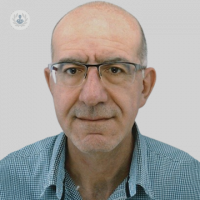Understanding strabismus: A comprehensive overview
Written in association with:Strabismus, commonly known as crossed eyes, is a condition where the eyes do not align properly. Instead of both eyes pointing in the same direction, one eye may turn inward, outward, upward, or downward while the other eye remains focused.
This misalignment can be constant or intermittent and can affect one or both eyes. Strabismus is more than just a cosmetic issue; it can lead to serious visual problems if left untreated. In this article below, distinguished consultant ophthalmologist, Mr Ayman Khaier, details how the condition is caused, and outlines the treatment options available to patients with it.

Causes and types of strabismus
The causes of strabismus are varied and can include genetic factors, problems with the muscles controlling eye movement, issues with the nerves that transmit information to the muscles, or conditions affecting the brain where visual processing occurs. Strabismus is often categorised based on the direction of the misalignment.
Esotropia refers to inward turning of the eye, exotropia to outward turning, hypertropia to upward turning, and hypotropia to downward turning. Each type of strabismus can affect vision differently and requires specific approaches to treatment.
Effects on vision
Strabismus can significantly impact a person’s vision. When the eyes are not aligned, the brain may receive two different images, which can lead to double vision. To avoid this, the brain may start ignoring the image from the misaligned eye, a process known as suppression.
Over time, this can result in amblyopia, or lazy eye, where the vision in the affected eye becomes weak. Without proper treatment, this condition can lead to permanent vision loss in the misaligned eye.
Treatment options
The treatment of strabismus varies depending on the severity and type of misalignment. Common treatments include corrective glasses or contact lenses, eye patching, vision therapy, and in some cases, surgery. The goal of treatment is to improve eye alignment, restore binocular vision, and prevent long-term vision problems. Early diagnosis and intervention are crucial for the best outcomes, especially in children, as their visual systems are still developing.


